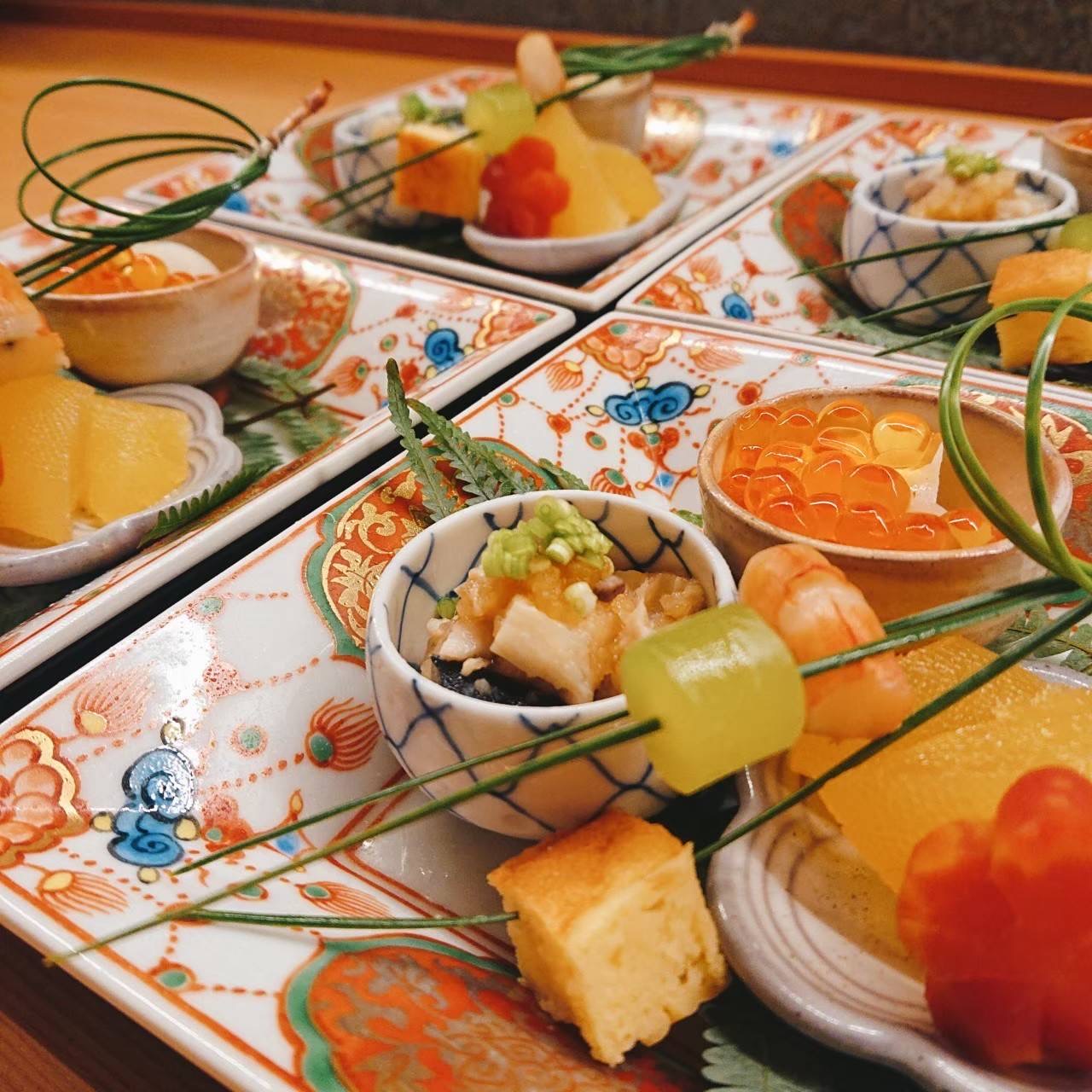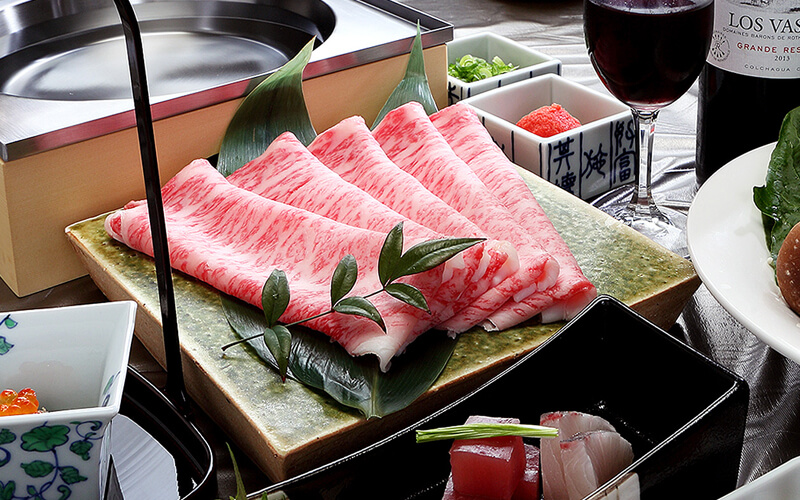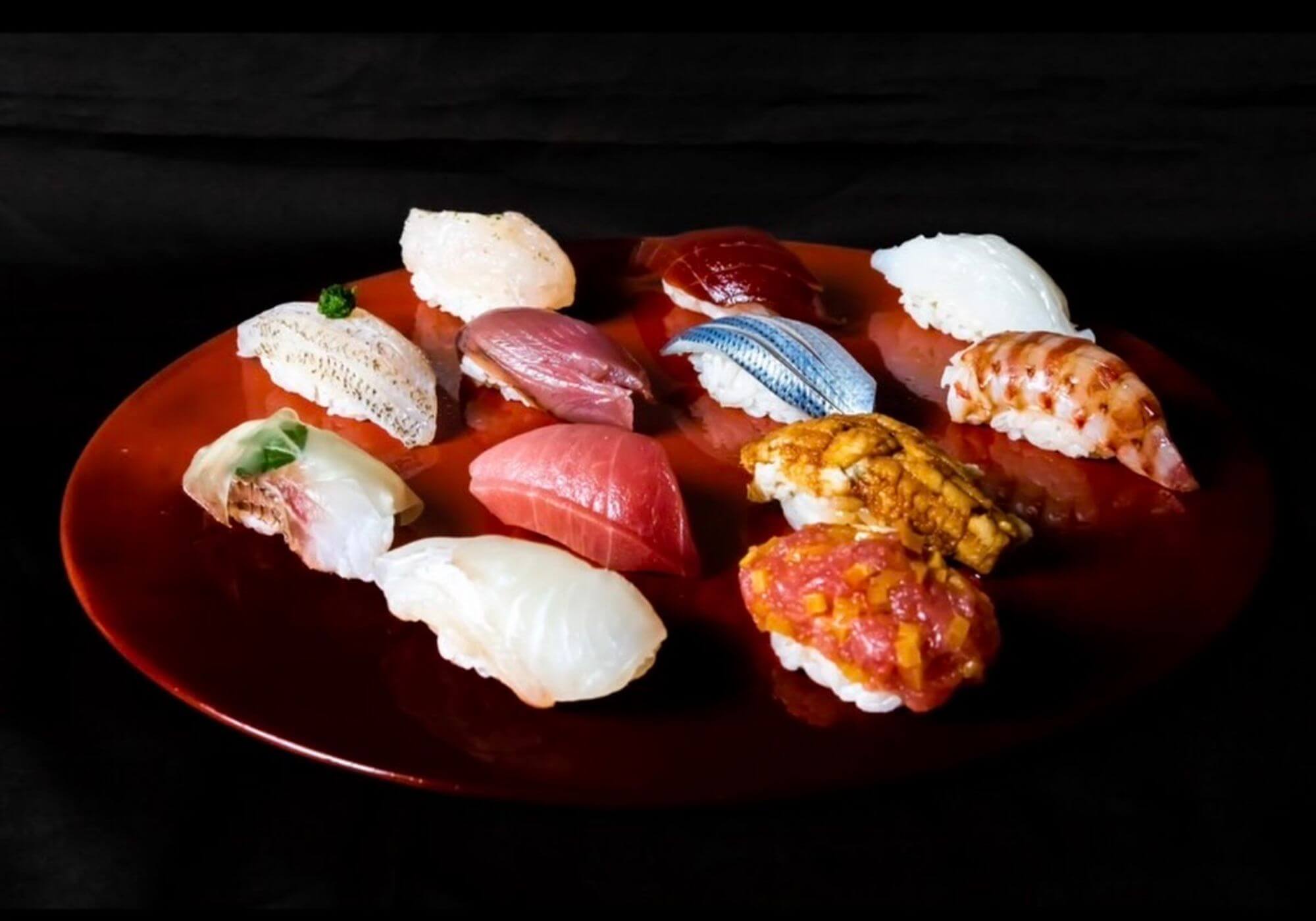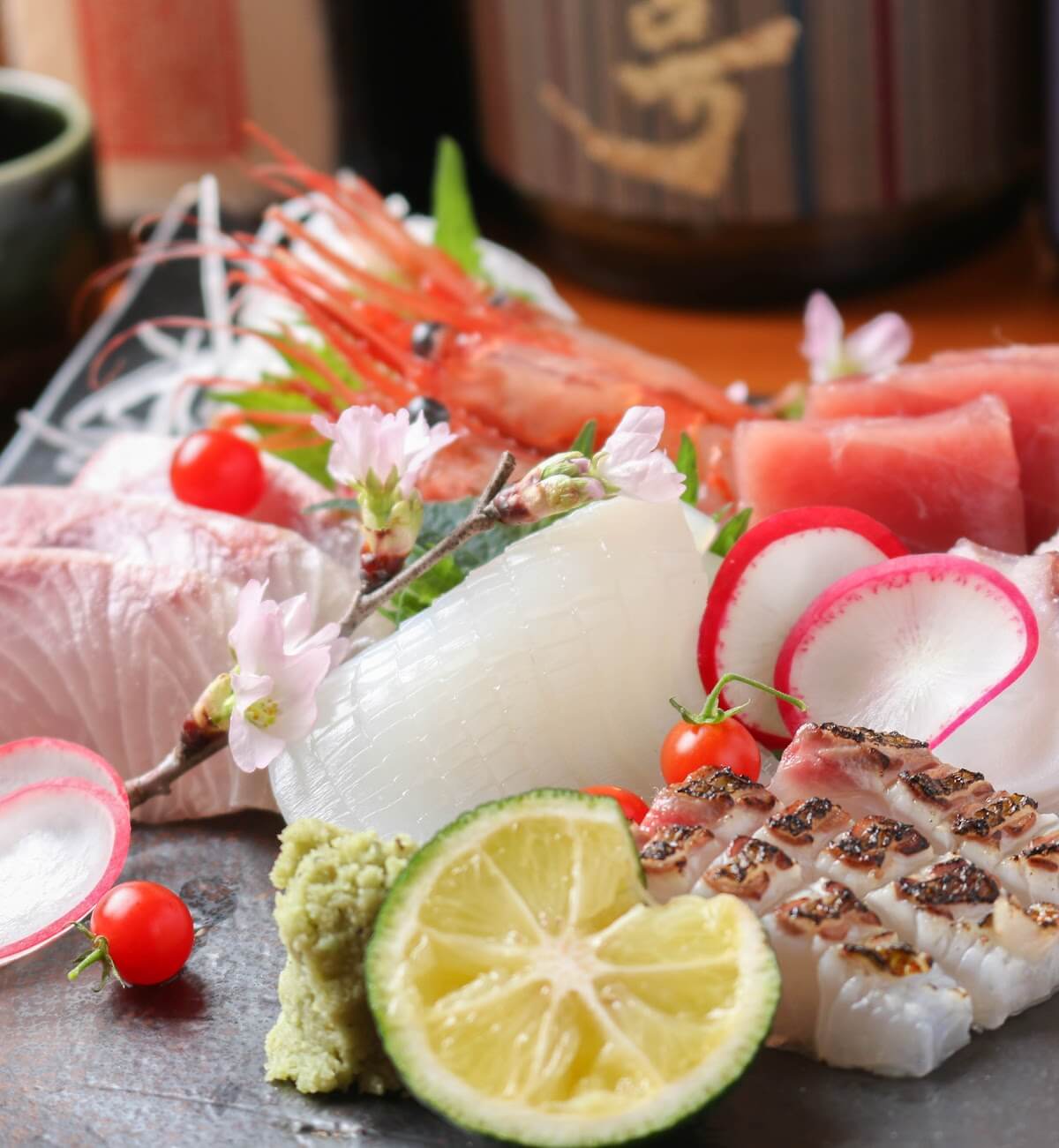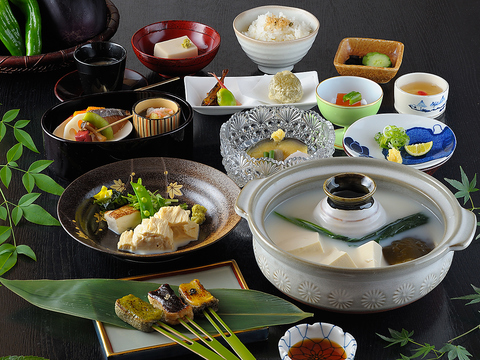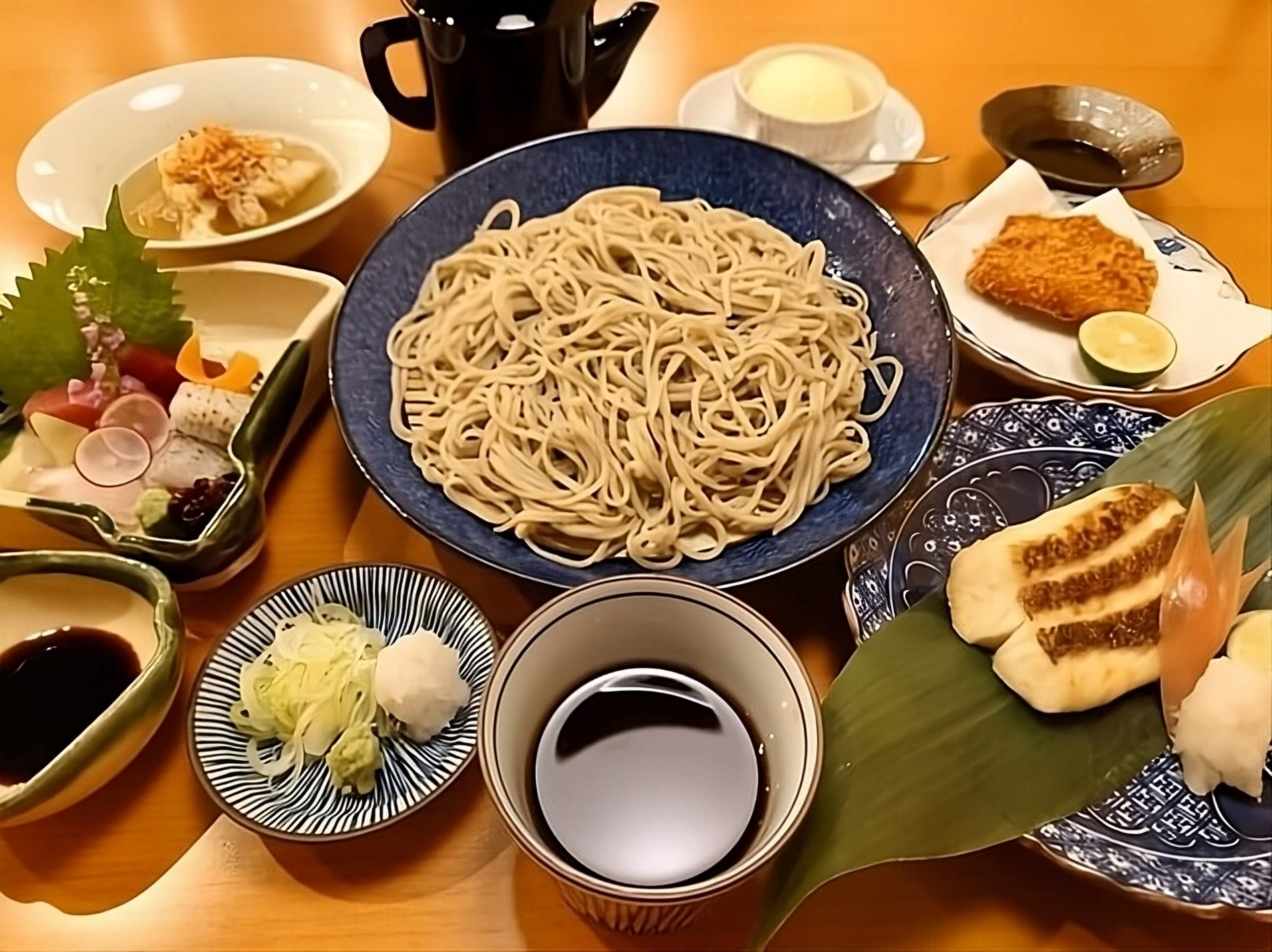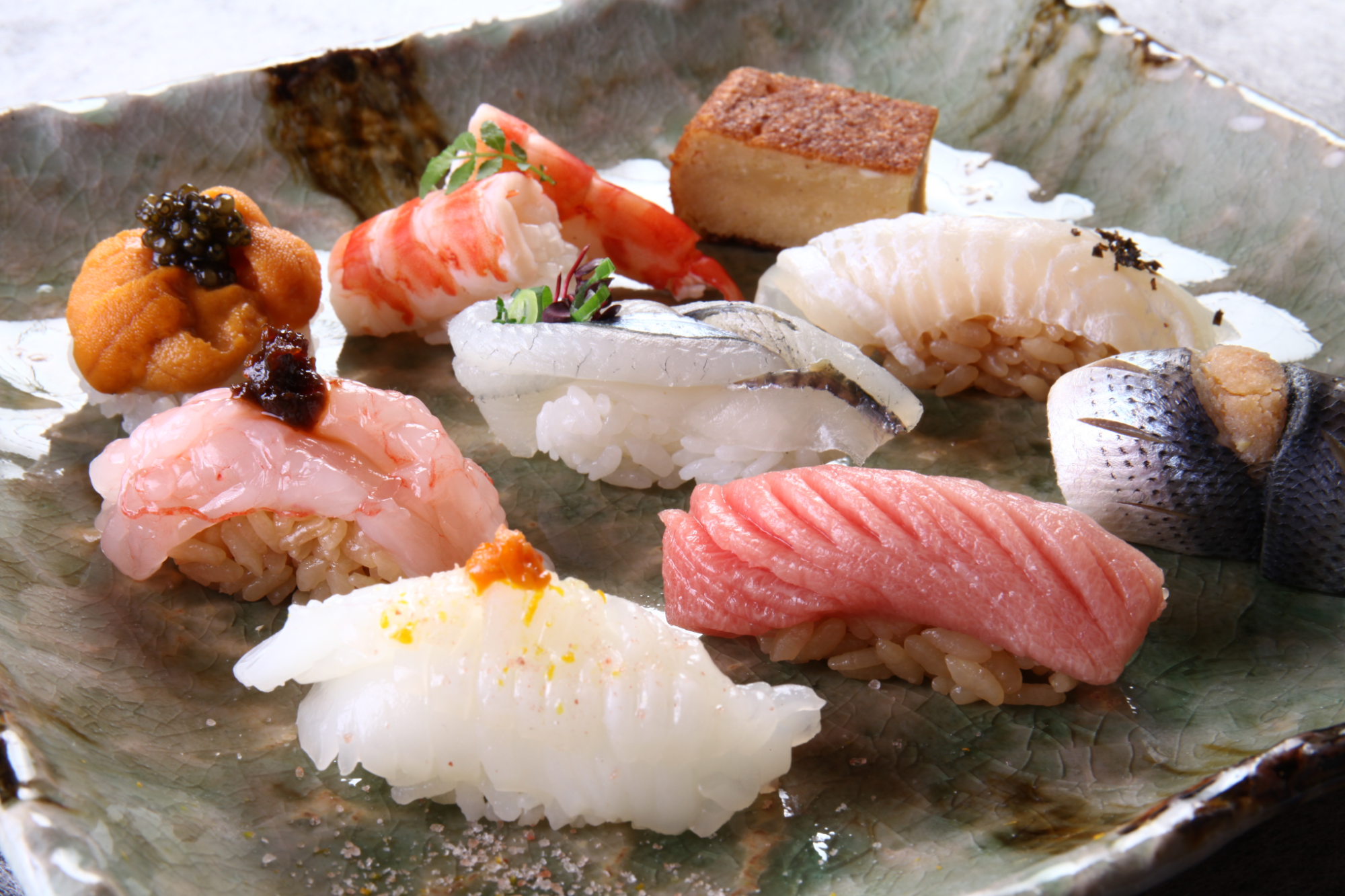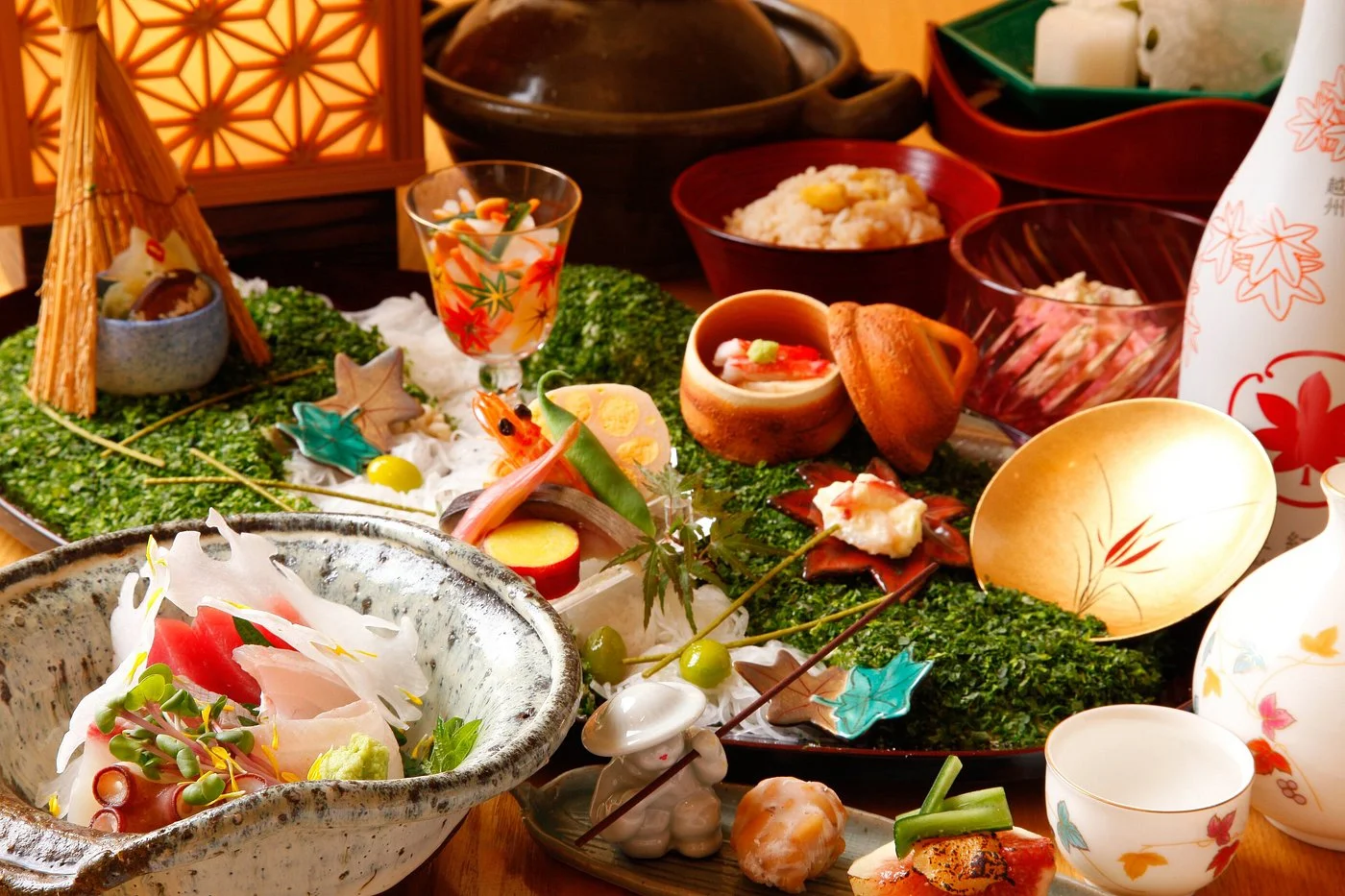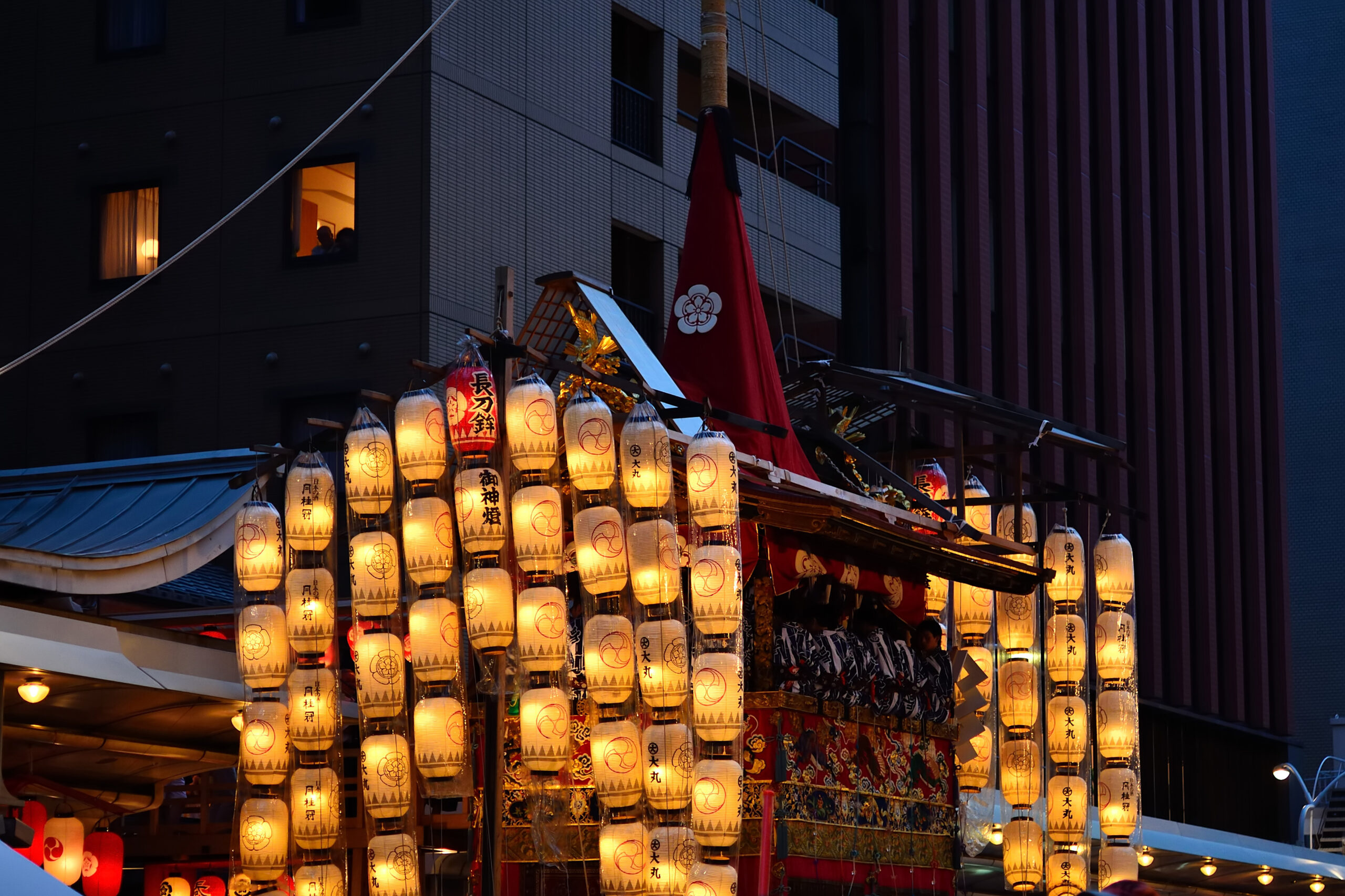
The Gion Festival, or Gion Matsuri, is considered one of the most famous and largest festivals in all of Japan. The entire city of Kyoto joins in on the festive atmosphere during this time. If you’re planning a summer trip to Japan, or want to experience a traditional Japanese festival during your travels, attending the Gion Festival is a sure way to immerse yourself in Japanese culture and history.
But how to start planning? In this blog, we’ll go through all the information you need to start planning your vacation during the Gion Matsuri!
The Gion Festival, or the Gion Matsuri, is a festival held in Kyoto City, Japan. As one of the most famous festivals in Japan, tourists come from all over Japan to attend. In essence, it is a summer festival centered around Shinto ceremonies conducted at Yasaka Shrine (Yasaka Jinjya), with the main draw a parade of 33 large floats called yama and hoko in mid-July.
The 2025 Gion Festival will take place over the month of July. Although the official start of the matsuri is on July 1, events open to the public begin on July 10.
The highlight of the festival are the float processions on July 17 and 24, as well as the night-time festivals taking place during the 3 days prior to the float processions.

Although the Gion Matsuri is a month long festival, the main events that brings visitors to Kyoto City is the Yoiyama on the night of July 16 and the Yamahoko Junko, or First Float Procession, on July 17.
During the Yoiyama, the streets in central Kyoto are closed to vehicles, special to the Gion festival. Where you would normally see cars and buses, festival stalls line the streets and locals and tourists alike dress up in yukata to enjoy the night festival. You can enjoy Japanese street foods like takoyaki, yakisoba, shaved ice, and more. There are also game stalls where you can try your luck, popular with children. the famous traditional floats are also on full display around the area, and you can specially see them up close. A few floats even allow visitors to climb up for a better view!
The Yamahoko Junko is the grand procession of the large traditional floats down the streets. The sight of the large floats making their way are truly the gem of the festival. The best spots to view the procession are at street corners where the floats must be manually lifted and turned. This is thought to be one of the main sights of the Gion Matsuri procession.
The events of the Gion Festival take place in central Kyoto, mainly around Shijo, Kawaramachi, and Oike streets. We recommend taking advantage of the subway lines to access Kawaramachi Station (Hankyu Line) or Gion-Shijo Station (Keihan Line). During certain events, some areas are also closed off to cars and buses, so be sure to be aware of the dates and traffic regulations in place during your visit as taxis may not be able to take you to your destination. In general, plan on walking to participate! Part of the fun of Gion Festival is being able to walk around Kyoto taking in the festival atmosphere, so be sure to bring a comfortable pair of shoes!
For the most immersive experience, we recommend staying at an accommodation within easy walking distance the Shijo area. With some events spread out over the same day, or taking place during the night, having a place to go back to for a break nearby gives you much more freedom to enjoy the festival at your own pace without worrying about transportation.
See our recommended accommodations in Kyoto: MACHIYA RESIDENCE INN KYOTO
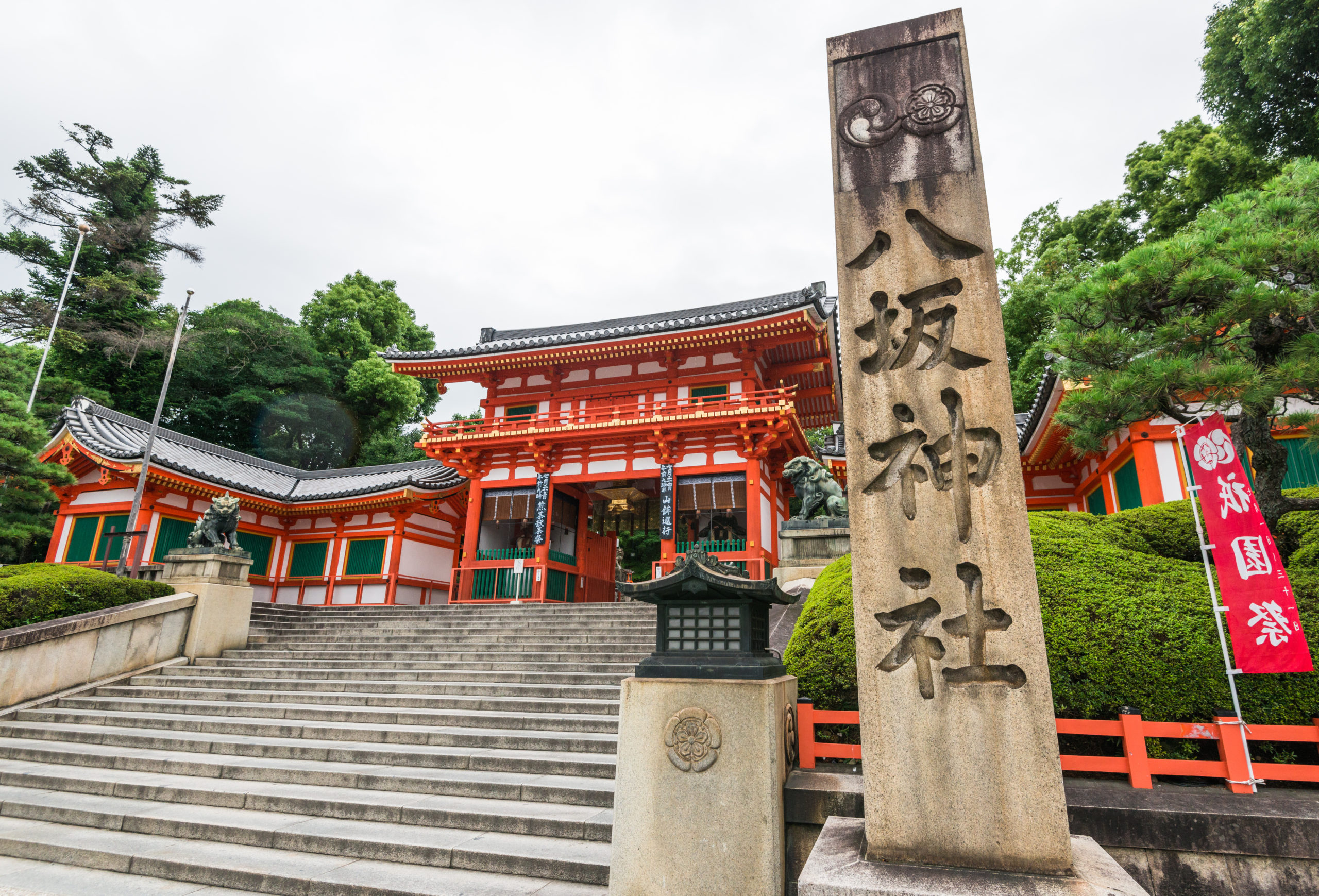
The Gion Festival dates back to 869, when the emperor of Japan ordered a religious ceremony to be conducted to placate the gods and subdue the plague ravaging the city of Kyoto. Along with ceremonies and prayers, the people erected 66 tall spears, representing the 66 provinces of Japan at the time. This became the precursor to the 33 famous yama and hoko floats today. These spears were originally located at Shinsen-en Garden, located south of the imperial palace at the time. The garden is still open to visitors today, located just south of Nijo Castle.
From there, the festival was celebrated every time there was an outbreak of sickness, but in 970, it was decided to make the festival an annual event. As time went on, the Gion Festival continued to evolve and become more and more elaborate. In 1533, the Ashikaga shogunate general banned the religious elements of the festival, so it became more of a chance for the wealthy and prestigious in Kyoto city to show off. Today, the festival has gone back to include the religious elements that were so instrumental in the beginning years.
Recommended accommodations near Nijo Castle and Shinsen-en Garden:
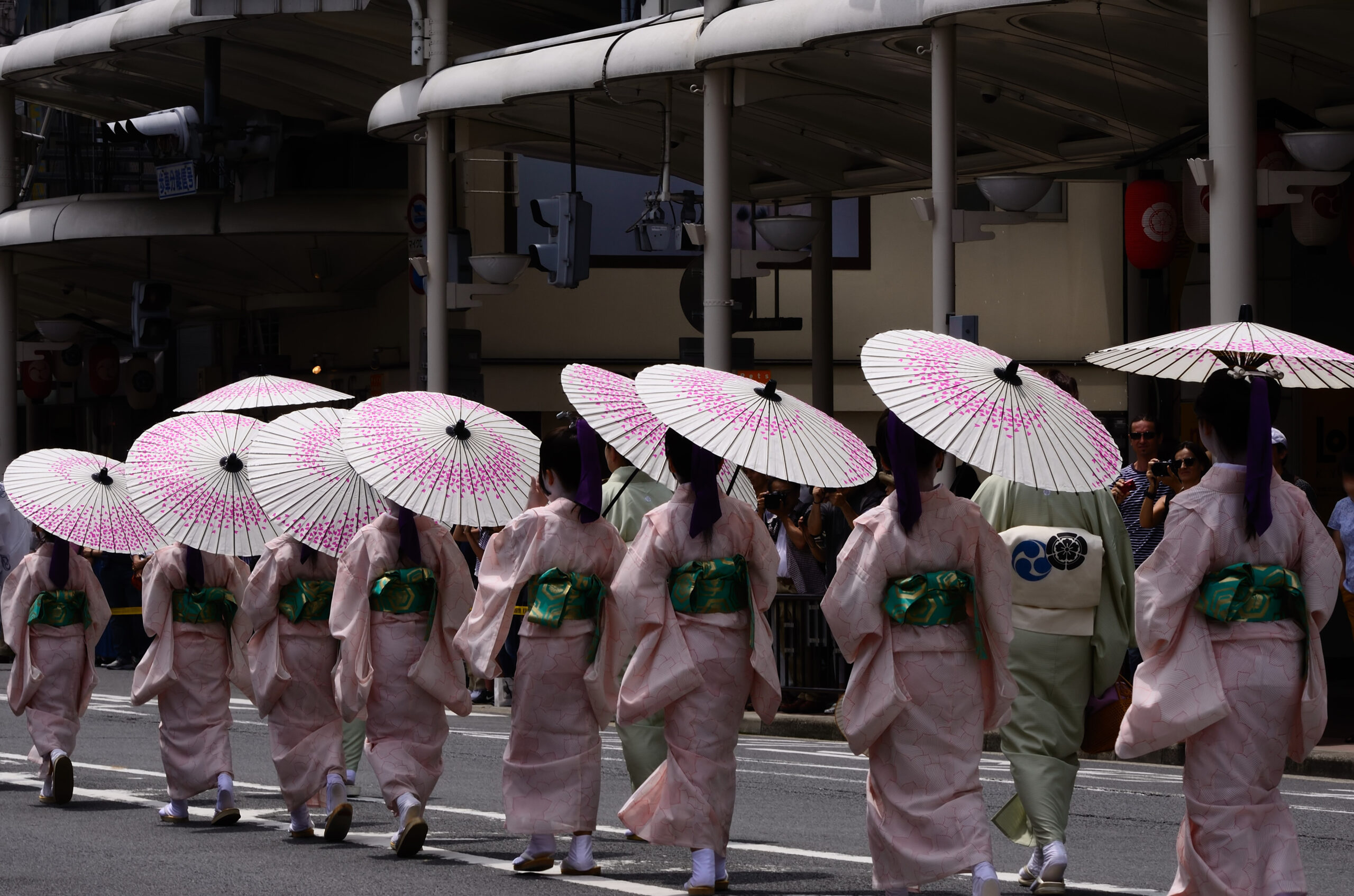
The festival is divided into 2 halves, the Saki Matsuri and Ato Matsuri, and the dates for the various events remain the same each year. Events open to the public begin on July 10.
Many events are spread over the entire month, but we’ve made a list of the major events and how to enjoy them. Although the main parade and night-time festivals in mid-July are the most popular, other events are also steeped in history and tradition and are a sight to see.
Lantern Reception
When: July 10 (4:30p.m.~9:00p.m.)
Where: Begins and ends at Yasaka Shrine
What: A procession of men with lanterns and costumed women and children accompany the mikoshi, or portable shrine, from Yasaka Shrine to Honnoji Temple, through Teramachi Street, and then back down Shijo Street to Yasaka Shrine again. Children perform various dances in front of the shrine after returning.
Mikoshi Purification
When: July 10 (8:00p.m.~9:30p.m.)
Where: Begins at Yasaka Shrine, ends at Shijo Ohashi Bridge
What: The mikoshi from Yasaka Shrine are carried from Yasaka Shrine to Shijo Ohashi Bridge to be purified with water from the Kamogawa River.
Float Construction
When: July 10~14 (all day)
Where: various participating neighborhoods (we recommend checking out the Shijo-Karasuma area to start with)
What: The various yama and hoko floats begin construction. This is done from scratch and without the use of nails and modern means, completely relying on traditional methods that have been passed down over the years. The floats, some said to be as big as 12 tons, are assembled slowly, and visitors are welcome to watch!
Sacred Child Shrine Visit
When: July 13 (11:00a.m.)
Where: Yasaka Shrine
What: A chigo, or sacred child, is chosen from among the prestigious families in Kyoto each year. They are considered the vessels for the gods during the festival period, so are usually carried everywhere so that their feet do not touch the ground. Before riding the leading float during the parade, he makes his way to the Yasaka Shrine in a procession dressed in traditional clothe. At the main temple he prays for the success of the festival.
Yoiyama
When: July 14~16 (during the evenings)
Where: Shijo-Karasuma area
What: This night-time festival is the main enjoyment for many Kyoto residents and visitors, as food stalls line the streets and the floats are lit up and on display. You can purchase lucky charms, enjoy eating traditional ‘chimaki’, and if you’re lucky, you may have a chance to climb into a traditional parade float. If you truly want to blend in with the locals, we recommend wearing a yukata, or light summer kimono, to the festival. Many Japanese choose to dress up and participate wearing traditional clothe during this festival.
Byobu Matsuri
When: July 14~16 (during the evenings)
Where: Shinmachi and Muromachi neighborhoods
What: Held at the same time as the Yoiyama, many wealthy families in the Shinmachi and Muromachi area open up their doors for the public to view traditional treasures collected by their families. You will get a chance to see beautiful artwork and majestic folded screens that are usually kept hidden away.
Iwami Kagura
When: July 16 (6:30p.m.~)
Where: Yasaka Shrine
What: Traditional Iwami Kagura dances are performed on the nō stage at Yasaka Shrine. The sacred dances are expertly performed with beautiful costumes, making for a truly memorable event. Professional dancers come from the Izumo area to perform specially on this day, so it is definitely worth a trip to the shrine!
First Float Procession (Yamahoko Junko)
When: July 17 (9:00a.m.~1:00p.m.)
Where: Beginning at Shijo Station, and ending just past Karauma Oike Station
What: The procession, or parade, is the true climax and jewel of the Gion Festival, held to purify the streets. After the sacred rope on Fuyacho Street is cut by the sacred child, the procession officially starts. 2/3rds of the participating floats make their way through the streets, but the true spectacles are the 3 large turns, or tsujimawashi, that the floats make. To get a good view, we recommend grabbing a spot on one of the corners where the turns take place. The 1st turn is at the intersection by Kawaramachi Station (around 9:30), the second at the intersection near Kyoto City Hall (around 10:20), and the last at Shinmachi Oike Street (around 11:20).
Shinkosai
When: Juky 17 (6:00p.m.~)
Where: Beginning at Yasaka Shrine and ending at Shijo Teramachi
What: A contrast to the graceful float procession early in the day, the Shinkosai is a boisterous and thrilling event with lots of yelling and shouting by the participants as well as viewers. Three large mikoshi, or portable shrines, appear in front of Yasaka Shrine, where a ceremony is performed transferring the Shinto god from the shrine into the mikoshi. The mikoshi are then carried through the streets from Yasaka Shrine to the intersection of Shijo Teramachi, where they will be displayed until the 24th. The earlier parade is actually an opening act for this evening event, purifying the path for the mikoshi to travel.
Float Construction of the Ato Matsuri
When: July 18~21
Where: various participating neighborhoods (we recommend checking out the Shijo-Karasuma area to start with)
What: Like the earlier construction, the remaining 1/3rd of the floats are built by hand during this time. If you missed this during the Saki Matsuri, be sure to watch the magnificent floats go up!
Yoiyama of the Ato Matsuri
When: July 21~23 (during the evenings)
Where: Shijo-Karasuma area
What: Like the earlier Yoiyama, the area is lit up with lanterns and various food stalls line the streets. Be sure to grab some shaved ice with syrup to cool off!
Yamahoko Junko of the Ato Matsuri
First Float Procession (Yamaboko Junkō)
When: July 24 (9:30a.m.~11:50a.m.)
Where: Beginning at Karasuma Oike Station, and endingat Shijo Station
What: The remaining 1/3rd of the floats make their majestic procession down the streets. The path begins where the first parade ended, retracing its way backwards down to Shijo Station.
Hanagasa Junko
When: July 24 (10:00a.m.~)
Where: Starting and ending in Yasaka Shrine
What: 10 colorful and festive umbrella floats begin from Yasaka Shrine and make their way through central Kyoto, accompanied by around 1,000 people, mostly women and children. The geiko and maiko of Kyoto also participate in this event. As the lively procession makes its way, dances are performed periodically. The finale is after they all return to Yasaka Shrine, where a final series of performances are conducted as an offering to the gods.
Kankosai
When: July 24 (4p.m.~)
Where: Beginning at Shijo Teramachi and ending at Yasaka Shrine
What: The 3 mikoshi displayed at Shijo Teramachi are once again paraded loudly down the streets back home to Yasaka Shrine. There, a ceremony is held to return the god back to Yasaka Shrine.
Mikoshi Purification
When: July 28 (5:00p.m.~)
Where: Begins at Yasaka Shrine, ends at Shijo Ohashi Bridge
What: The mikoshi from Yasaka Shrine are once again carried from Yasaka Shrine to Shijo Ohashi Bridge to be purified with water from the Kamogawa River.
Purification at Eki Shrine
When: July 30
Where: Eki Shrine within the grounds of Yasaka Shrine
What: This is the official final event of the Gion Festival, a summer purification ritual! Participants and organizers of the Gion Festival gather to receive their blessing from a priest and pass through a sacred reed ring. After the ceremony, anyone is allowed to pass through the ring.
Looking for the perfect place to stay during your trip to Japan and the Gion Festival? MACHIYA INNS & HOTELS offers a collection of beautifully renovated traditional Japanese accommodations in Kyoto, Kanazawa, and Takayama. Each property combines the charm of historic machiya architecture with modern amenities, providing an authentic and comfortable experience.
Choose from private holiday house rentals or boutique hotel rooms, each thoughtfully designed to preserve the unique character of traditional Japanese design while meeting the needs of today’s travelers. Whether you’re exploring ancient temples in Kyoto, sampling fresh seafood in Kanazawa, or wandering the quaint streets of Takayama, our accommodations provide the perfect home base for your adventures. Several of our accommodations in Kyoto are within walking distance of the main area for the Gion Festival, perfect to truly immerse yourself in the matsuri experience!
Discover your ideal stay and start planning your unforgettable journey to Japan. Visit the MACHIYA INNS & HOTELS official website to learn more and book your stay today!
Make your trip a truly local experience, and go where the locals go. If you're wondering where the locals go to eat when hanging out with family, celebrating with friends, stopping by for an after work drink... look no further.
Machiya Locals Website